In the history and urban development of Guadalajara, the church and
neighborhood named San Juan de Dios are the incandescent center. Just
to the east of the Historic Center of Guadalajara in the heart of the
San Juan de Dios neighborhood is the intersection of Calzada
Independencia and Calle Juárez.
Since the founding of the city on this very spot, a river (in
truth little more than a stream) called San Juan de Dios has run under
the intersection, which for hundreds of years has been a place of
meeting, work, and relaxation.
The first church consecrated in then-newborn Guadalajara was the Chapel
of the True Holy Cross, built on the spot where today we find the
church of San Juan de Dios. At one time a hospital bearing the same
name also functioned at the same location.
Around 1885, Jalisco Governor Francisco Tolentino began public
works projects in the San Juan de Dios neighborhood. These projects
included building potable water and sanitation systems, the first in
Mexico to be made of fortified concrete. The concrete tube was 12 feet
in diameter—so enormous that the street above it was built as a
beautiful promenade. To complete the roadway project, a median walkway
was added, with flying buttresses used to strengthen the structure.
Stunning benches, great monuments, and leafy trees completed the lovely
Calzada Independencia project.
Under the auspices of Tolentino’s successor, Governor José Guadalupe
Zuno Hernández, a small marketplace—then known as San Juan de Dios—was
added.
Fast forward 50 years—to 1955. The neighborhood surrounding the church
of San Juan de Dios had changed from a verdant, relaxing walkway to the
dirty backyard of Guadalajara, swarming with traffic jams, dive bars,
hustlers, prostitutes, and including a huge, permanent, and partially
covered tianguis
(street market) on its outskirts. In addition, every day enough garbage
was generated in the area that the neighborhood was always filthy and
reeked of vegetable, animal, and human waste. San Juan de Dios had
become the most visible stain on the beautifully burgeoning young
metropolis.
By luck (good as well as bad), a raging fire destroyed the majority of
that old market. Jalisco Governor Agustín Yañez authorized construction
of a new and permanent covered market, the enormous building we know
today as the Mercado San Juan de Dios, or Mercado Libertad.
Last remodeled in 1981, the Mercado has a surface area of
nearly 500,000 square feet, or slightly less than the entire area of
the old Green Bay Packers football stadium in Wisconsin, including its shops and administrative
offices.
It’s big. Really big. Housed on three floors, it has 70
entrances and is open 365 days a year from 7 AM till 9 PM. Its enormity
houses approximately 3,000 vendors. It is the largest enclosed market
in Latin America and the largest of its type (housing multiple-product
vendors) in the world.
Don Silverio, the market’s administrator with whom I talked, said that
there are larger markets in Asia and other parts of the world, but that
those larger markets sell only fish, flowers, meats, or some other
single item—while the Mercado Libertad sells untold thousands of
different categories of merchandise.
The Mercado Libertad has been the silent witness to urban and
commercial development in Guadalajara. The old Plaza de Toros (bull
ring) came down to make room for Guadalajara’s beautiful downtown
walking area, the Plaza Tapatía; Line Two of the Metro has been
installed; the central bus station was moved—and still the market looms
along the skyline.
The giant market continues to be the favorite shopping place for many
Tapatíos (residents of Guadalajara) as well as the people from outlying
towns who fill thousands of buses streaming daily into the city. In
spite of the opening of Guadalajara’s numerous modern malls and
supermarkets, the Mercado Libertad remains a center of commerce.
The Mercado Libertad has preserved for its vendors and its shoppers
some of Mexico’s best traditions even as it has followed the advances
in world commerce. Guadalajara’s identity is tied to this market, just
as the market’s identity is tied to Guadalajara.
If you’re visiting Guadalajara and would like to spend a fascinating day investigating all the sights,
sounds, smells, and tastes of the market, wear comfortable shoes and
plan to spend several hours taking in as much of it as possible.
When
you finally find yourself in ‘overwhelm’ mode, enjoy a shrimp cocktail,
a taco or two, or just a soft drink at one of the many restaurants on
the second floor. Rest your weary feet and refresh yourself until
you’re ready to head back to your hotel.
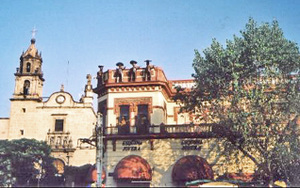
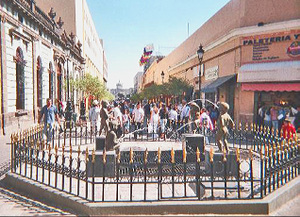

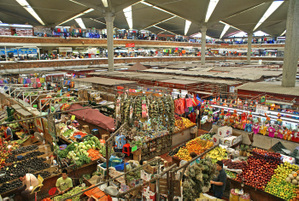
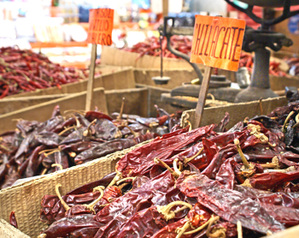
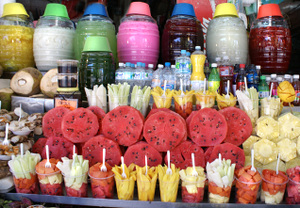
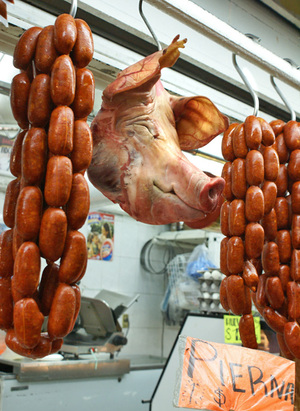
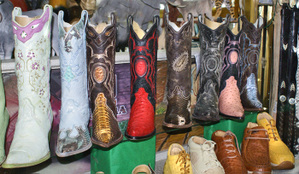
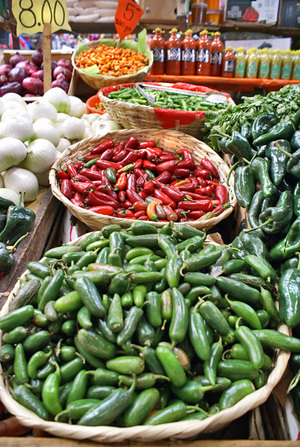
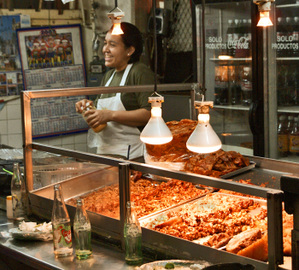
Leave a Reply